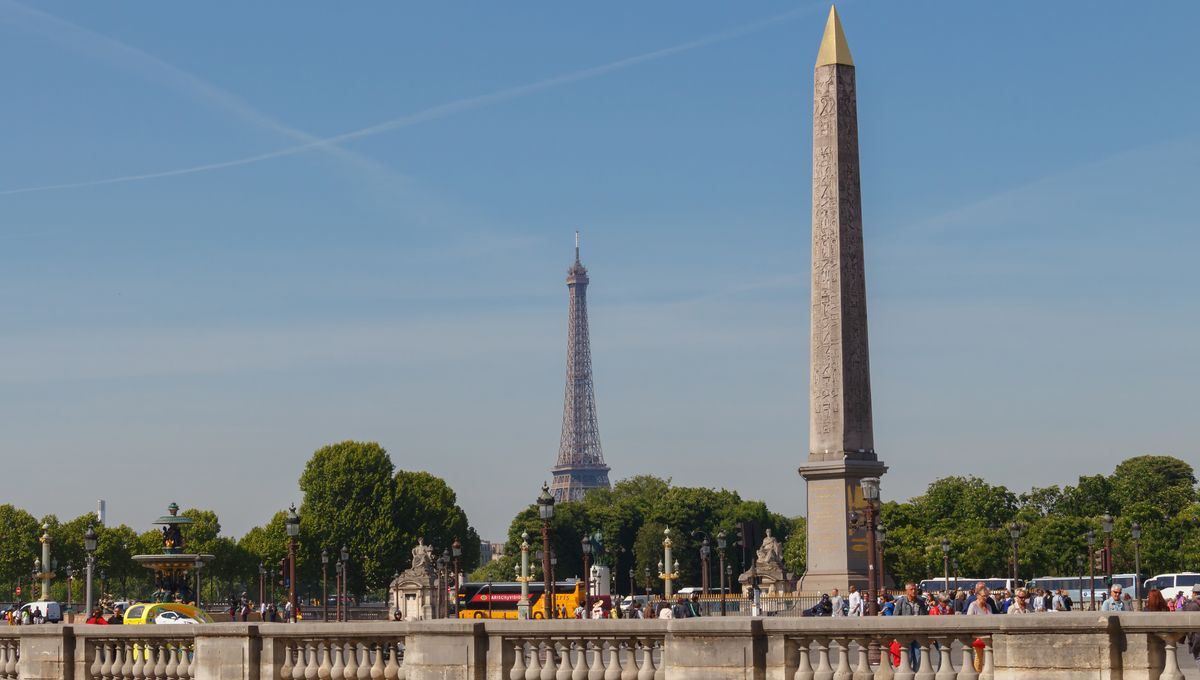
One hundred and eighty-nine years ago, a spectacular 3,300-year-old Egyptian obelisk was erected in Place de la Concorde, Paris, after it had been gifted to France by the viceroy of Egypt. Since then, the Concord (or Luxor) Obelisk has been on display to residents and visitors alike, it has been studied and scrutinized, and probably captured in more selfies than is fair for a monument. But after all this time, it seems the obelisk still has some secrets to share with the world.
According to Jean-Guillaume Olette-Pelletier, an Egyptologist and specialist in hieroglyphic cryptology at the Catholic University of Paris, there is a previously undocumented inscription at the obelisk’s top. Olette-Pelletier first identified the strange message in December 2021, while the obelisk was under renovation.
The scaffolding erected around the obelisk offered him a chance to examine its higher parts, which are usually difficult to view from ground level. Here he found the inscription near to the golden pyramid-like tip that sits atop the obelisk. Now he could see that the hieroglyphs could be read horizontally, which allowed Olette-Pelletier to identify previously unknown inscriptions.
These messages were themselves hidden within the hieroglyphs on the monument but were presented in a way that obscures them with a technique designed to hide their meaning. This form of hieroglyphic cryptography, Olette-Pelletier told Science et Avenir, is not easy to read today; there may only be around six scholars, including himself, who can actually do it. In fact, he has published specifically on this subject, explaining that the hieroglyphs were created to be “read in 3D”.
To understand the text, we need to know a little about the obelisk’s history. Before it was gifted to Paris, the monument used to be one of two that stood outside the Luxor Temple in Upper Egypt. Both pillars were built around the 13th century BCE, at the time of Ramses II’s reign. But at this time, the obelisk that is now in Paris would have had a face that could be seen by passengers traveling along the Nile River, and it is from this angle (around 45°) that the secret message is visible.
“When I calculated where to stand at the time to be able to admire this part of the obelisk, I ended up right in the middle of the Nile,” Olette-Pelletier added.
“And then I understood: it was only intended to be seen by the nobles arriving by boat at the temple of Luxor during the annual Opet festival, celebrating the return of the life forces of the god Amun.”
The message itself exalted Ramses II and his divine power, while another encouraged viewers to make offerings to appease the wrath of the gods. So, it was essentially propaganda helping to legitimize the pharaoh’s claim to power and his divinity.
Olette-Pelletier now intends to publish his findings in the journal ENiM.
Source Link: Hidden Message Discovered On 3,300-Year-Old Egyptian Obelisk In Paris